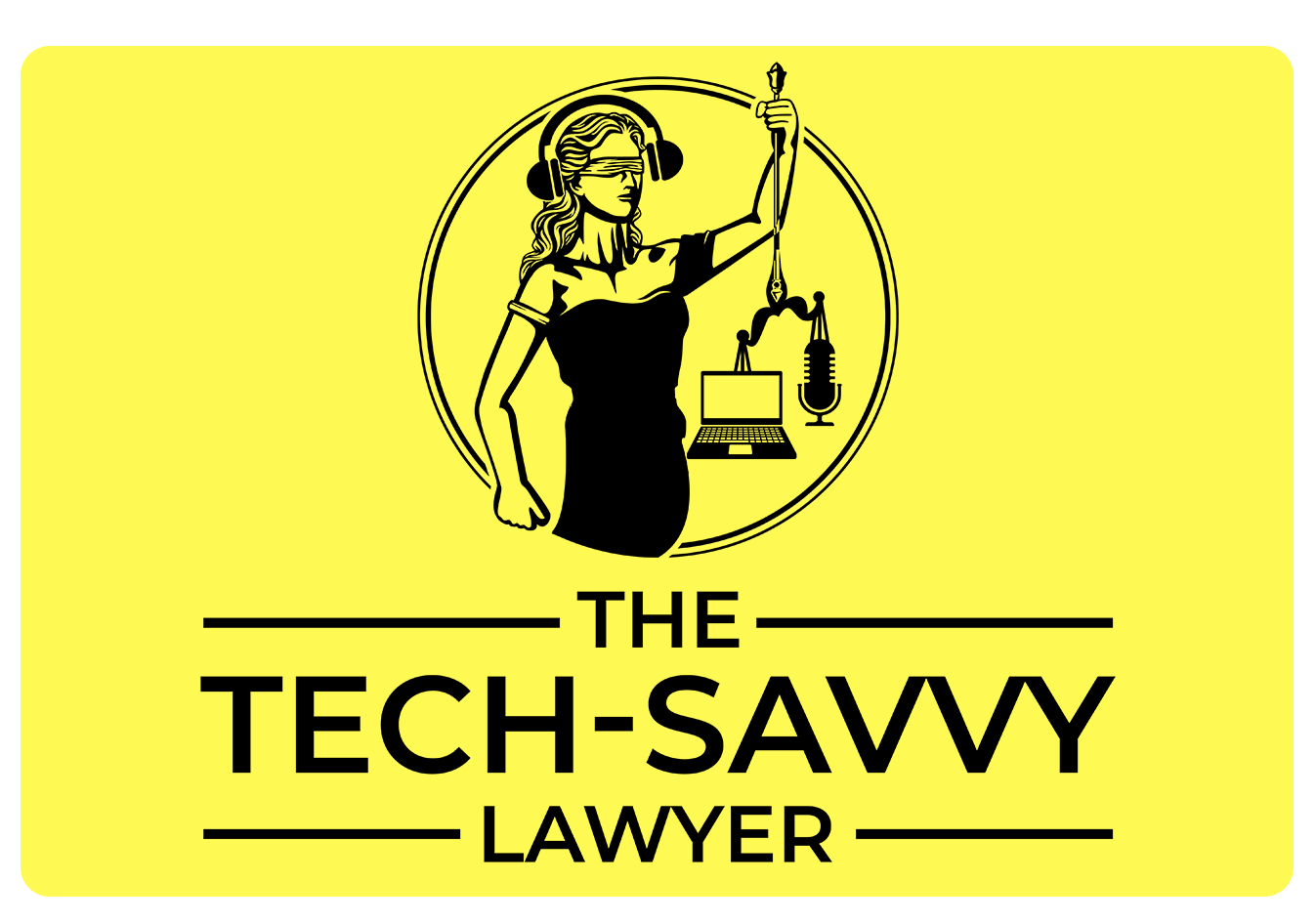How To 🛠️: Choosing the Right USB-C & Thunderbolt Cables for Legal Professionals - Understanding Speed, Power, & Professional Requirements in 2025 ⚡
/lawyers need to know what cables they are using in their tech work.
In today's technology-driven legal landscape, the cables connecting your devices matter more than you might realize. The Universal Serial Bus Type-C (USB-C) standard has become the dominant connection type for modern professional equipment, but the introduction of Thunderbolt 3, 4, and 5 technologies has created a complex ecosystem of capabilities that many legal professionals don't fully understand. These distinctions can impact everything from your laptop's charging efficiency to the speed at which you transfer critical case files, making cable selection a crucial professional decision.
Why Cable Selection Matters for Legal Practice 🏛️
Modern law firms increasingly rely on portable technology to maintain productivity across multiple locations. USB-C cables and Thunderbolt connections serve as the critical link between your devices, enabling power delivery, data transfer, and video output through a single connection . The European Union's recent mandate requiring USB-C as the universal charging standard demonstrates the connector's importance in professional environments.
The legal profession's unique requirements demand reliable, high-performance connections. Depositions recorded on tablets need swift transfer to desktop workstations. Court presentations require dependable connections between laptops and projection systems. Client meetings conducted remotely depend on stable power delivery to prevent device failures during critical discussions.
Poor-quality cables may deliver inconsistent power, cause data corruption, or even present fire hazards.
🚨
Poor-quality cables may deliver inconsistent power, cause data corruption, or even present fire hazards. 🚨
Understanding USB-C and Thunderbolt Cable Categories 🔌
USB-C cables fall into several categories, each serving distinct professional needs. Standard USB-C cables provide basic connectivity with varying data transfer speeds from USB 2.0 (480 Mbps) to USB 3.2 Gen 2x2 (20 Gbps). These cables excel in basic office environments where attorneys need simple device charging and document transfer capabilities.
Thunderbolt technology represents a significant advancement over standard USB-C connections . Thunderbolt 3 and 4 cables support up to 40 Gbps data transfer speeds while maintaining backward compatibility with USB-C devices. Thunderbolt 5, the latest generation, doubles this performance to 80 Gbps bidirectional bandwidth, with Bandwidth Boost capability reaching 120 Gbps for display-intensive applications.
Full-featured Thunderbolt cables provide comprehensive functionality, supporting data transfer, video output, and power delivery simultaneously. These cables excel in modern law office environments where attorneys need to connect laptops to external monitors while simultaneously charging devices and transferring large files.
Thunderbolt Technology Evolution and Legal Applications ⚙️
Thunderbolt 4 cables are probably good enough for lawyers who deal mostly with text and one additional monitor.
Thunderbolt 4 established mandatory minimum requirements that ensure consistent performance across all certified devices. Unlike USB-C standards where many features remain optional, Thunderbolt 4 requires 40 Gbps data transfer speeds, support for two 4K displays or one 8K display, and PCIe bandwidth (data transfer capacity per lane measured in gigabytes) of 32 Gbps. This consistency proves valuable for legal professionals who need reliable performance across different office locations and court systems.
Thunderbolt 5 represents the next generation of professional connectivity, offering 80 Gbps bidirectional bandwidth with Bandwidth Boost capability up to 120 Gbps. This technology supports dual 6K displays, PCIe Gen 4 data throughput at 64 Gbps, and power delivery up to 240 watts. Legal professionals working with video evidence, virtual reality presentations, or large-scale document productions benefit significantly from these enhanced capabilities.
The Bandwidth Boost feature in Thunderbolt 5 dynamically allocates bandwidth based on demand, providing up to 120 Gbps in one direction while maintaining 40 Gbps for the return path. This asymmetric allocation proves particularly valuable for attorneys conducting video depositions or presenting multimedia evidence in court settings.
Power Delivery Standards and Legal Practice Applications ⚡
USB-C Power Delivery specifications directly impact your device's charging capabilities and overall reliability. Standard USB-C cables support up to 100 watts of power delivery, adequate for smartphones, tablets, and many ultrabooks (premium, lightweight laptop computers) used in legal practice. However, high-performance laptops commonly used for legal research and document preparation often require higher power delivery capabilities.
Thunderbolt 4 requires support for up to 100 watts of power delivery, with availability up to 140 watts for compatible devices. Thunderbolt 5 extends this capability significantly, requiring up to 140 watts with availability up to 240 watts of power delivery. This enhanced power capability proves particularly valuable for legal professionals who rely on high-performance laptops for complex tasks such as large document review, video depositions, or presentations requiring substantial processing power.
Professional legal work often involves extended periods away from traditional power source. Courts, client offices, and temporary workspaces may offer limited charging opportunities. Cables supporting higher power delivery can significantly reduce charging time, ensuring devices remain operational during critical professional activities.
Data Transfer Speed Requirements for Legal Workflows 📈
Data transfer speeds become crucial when legal professionals handle large files common in modern practice. Video depositions, high-resolution evidence photographs, and comprehensive case documentation can consume substantial storage space and require efficient transfer capabilities.
USB 2.0 speeds (480 Mbps) handle basic document transfer adequately but struggle with multimedia files. USB 3.2 Gen 2 provides 10 Gbps transfer speeds, offering noticeable improvements for larger file handling. Thunderbolt 3 and 4 deliver 40 Gbps, while Thunderbolt 5 achieves up to 80 Gbps with Bandwidth Boost reaching 120 Gbps.
Legal professionals working with video evidence, virtual reality presentations, or large-scale document productions benefit significantly from higher-speed cables. The time savings compound when transferring multiple gigabytes of case materials between devices or to external storage systems.
Thunderbolt vs USB4 v2: Understanding Professional Differences 🔄
Thunderbolt 5 cables are good for lawyers who rely on video and/or large data files.
Thunderbolt 5 and USB4 v2 share similar underlying technology but differ significantly in implementation requirements. USB4 v2 specifications make many advanced features optional, with only 20 Gbps guaranteed and 80 Gbps as an optional capability. Thunderbolt 5, conversely, mandates 80 Gbps as the minimum requirement with 140 watts power delivery required.
This distinction proves critical for legal professionals who need consistent performance across different devices and locations. Thunderbolt certification ensures that every cable and device meets strict performance standards, while USB4 v2 devices may vary significantly in actual capabilities.
The mandatory certification process for Thunderbolt products provides additional assurance for professional environments. Legal professionals investing in Thunderbolt-certified equipment can expect reliable performance regardless of manufacturer or specific implementation.
Safety and Compliance Considerations 🛡️
Professional legal practice demands attention to safety standards and equipment reliability. USB-C cables carrying more than 60 watts require Electronic Marker (E-Marker) chips to communicate power requirements safely. These chips prevent dangerous power delivery mismatches that could damage expensive professional equipment.
The USB Implementers Forum (USB-IF) and Intel provide certification programs ensuring cable compliance with safety standards. Certified cables display appropriate logos and markings, providing assurance of proper manufacturing and testing. Legal professionals should prioritize certified cables to protect valuable equipment and maintain reliable operations.
Counterfeit or substandard cables pose significant risks in professional environments. Poor-quality cables may deliver inconsistent power, cause data corruption, or even present fire hazards. The potential consequences of equipment failure during critical legal proceedings justify investing in properly certified cables.
Practical Selection Guidelines for Legal Professionals 💼
Assess your specific professional requirements before selecting cables. Attorneys primarily using tablets and smartphones for basic tasks may find standard USB-C cables with 60-watt power delivery sufficient. However, professionals relying on high-performance laptops for complex legal software should consider Thunderbolt 4 or 5 cables supporting higher power delivery and data transfer speeds.
Consider your typical work environments and usage patterns. Mobile attorneys who frequently work in various locations benefit from durable, flexible cables that withstand regular handling. Office-based professionals may prioritize longer cables for permanent desk setups or conference room installations.
Evaluate your data transfer needs based on file types and sizes commonly handled in your practice. Personal injury attorneys working with extensive medical records and accident reconstruction videos require different capabilities than corporate attorneys primarily handling text-based contracts.
Selecting cables that support current and emerging standards ensures continued compatibility as your technology needs evolve.
💡
Selecting cables that support current and emerging standards ensures continued compatibility as your technology needs evolve. 💡
Cable Length and Performance Considerations 📏
Thunderbolt 5 passive cables support full performance up to 1 meter in length, with specialized implementations available in 0.3, 0.5, 0.8, and 1-meter lengths. Beyond 1 meter, active cables with built-in electronics become necessary to maintain signal integrity over longer distances.
Thunderbolt 4 cables under 1 meter can support Thunderbolt 5 data rates, providing some forward compatibility for existing installations. This backward compatibility proves valuable for legal professionals upgrading their technology infrastructure gradually.
Professional legal environments often require longer cable runs for conference rooms or courtroom presentations. You will need Active Thunderbolt cables to maintain performance over distances up to 2 meters. This will enable flexible installation options for permanent and temporary setups.
Future-Proofing Your Cable Investment 🚀
The legal technology landscape continues evolving rapidly. Thunderbolt 5 adoption is accelerating, and 240-watt power delivery is becoming more common in professional devices. Selecting cables that support current and emerging standards ensures continued compatibility as your technology needs evolve.
Professional legal practice increasingly relies on sophisticated technology for case management, client communication, and court presentations. Investing in appropriate Thunderbolt cables from reliable and admittedly more expensive providers represents a small but crucial component of maintaining technological competency in modern legal practice.
The continued development of artificial intelligence tools and high-resolution display technologies in legal applications will demand higher bandwidth and power delivery capabilities. Legal professionals who understand these evolving standards position themselves advantageously as technology continues advancing.
📊 USB-C & Thunderbolt Cable Comparison Table
Final Roundup 📋
USB-C and Thunderbolt cable selection directly impacts professional efficiency and equipment reliability in modern legal practice. Understanding power delivery requirements, data transfer speeds, safety standards, and the distinctions between USB-C, Thunderbolt 4, and Thunderbolt 5 enables informed decisions that support your professional objectives. As legal technology continues advancing, professionals who master these fundamental concepts will maintain competitive advantages in increasingly technology-dependent practice environments.



































